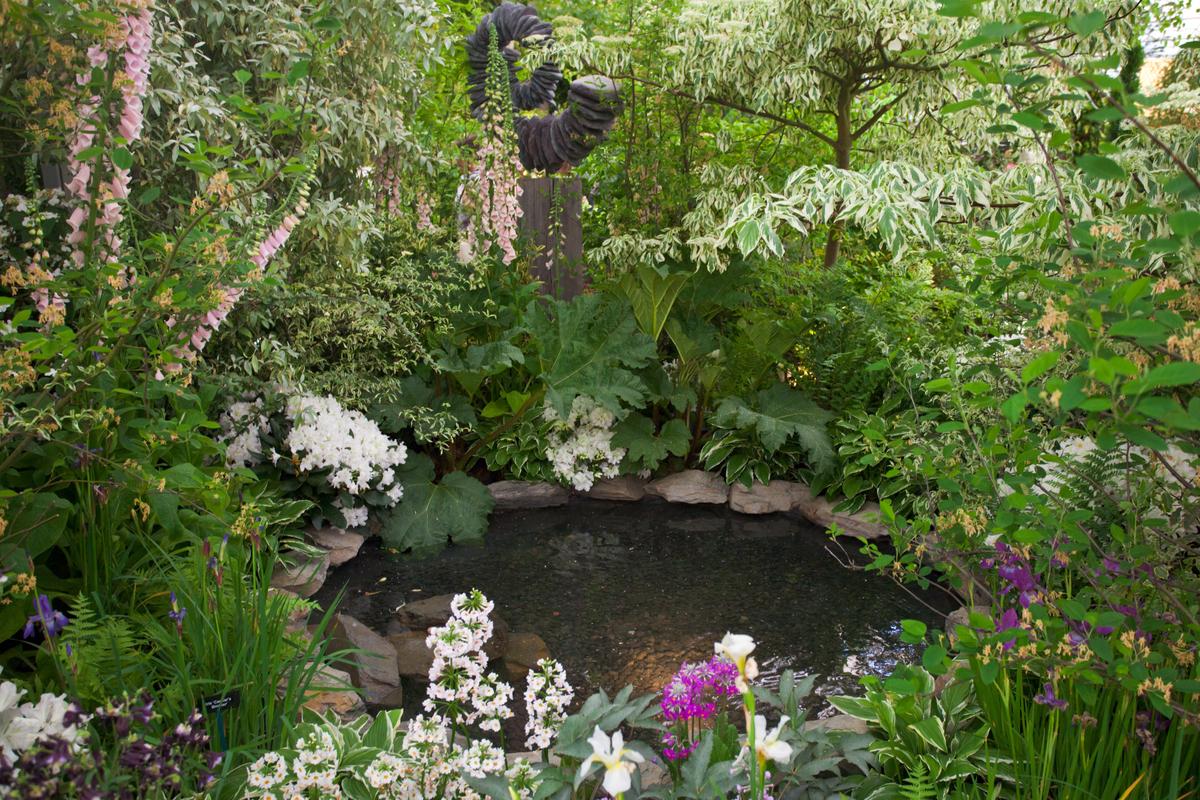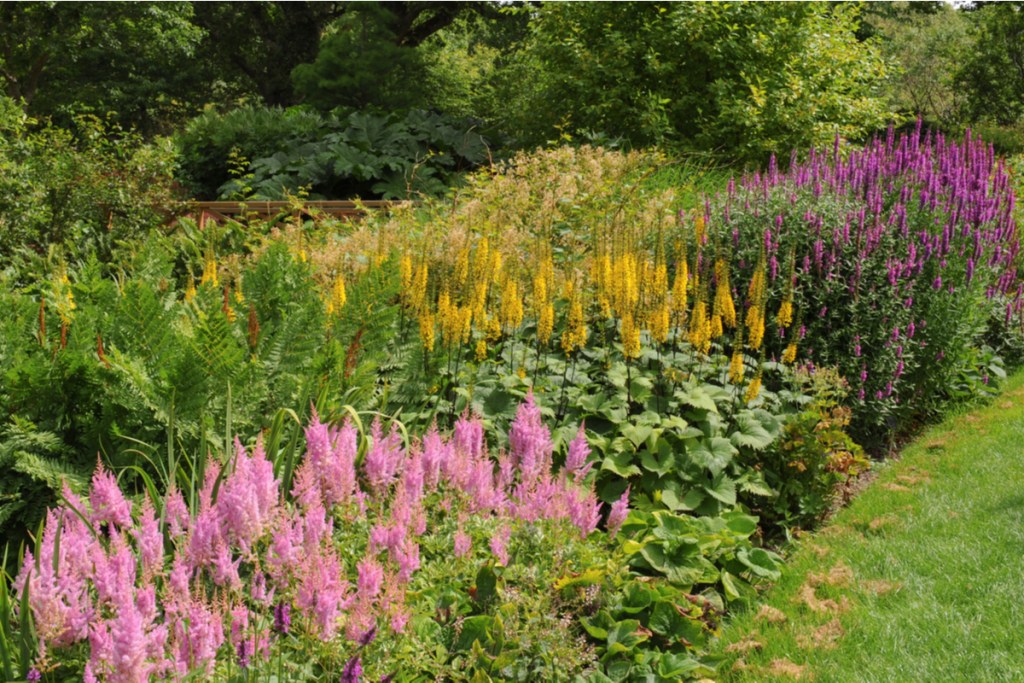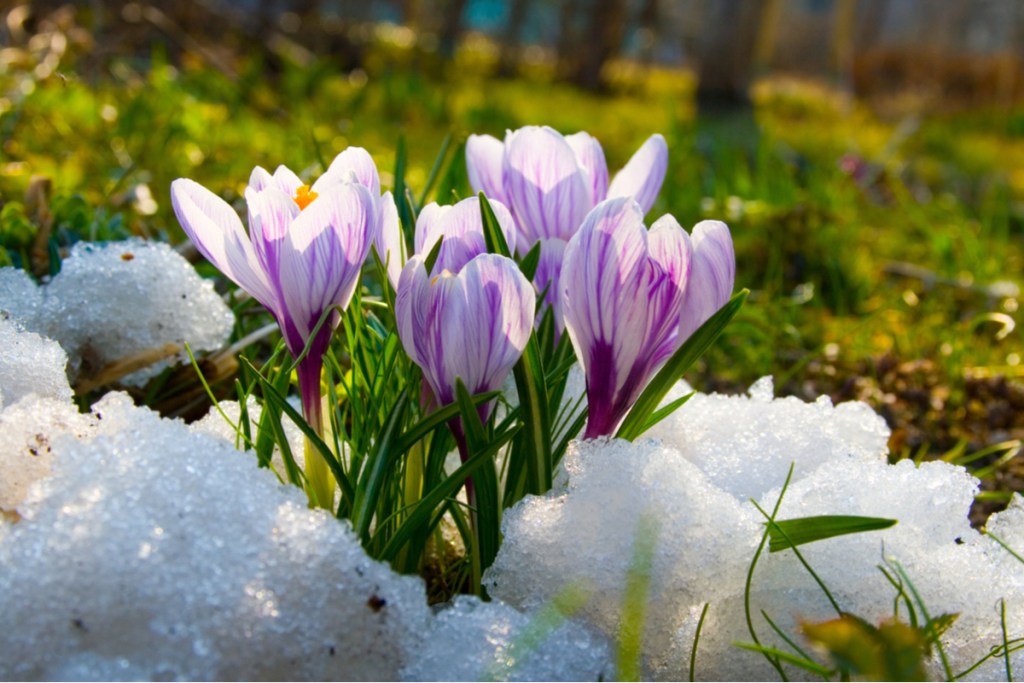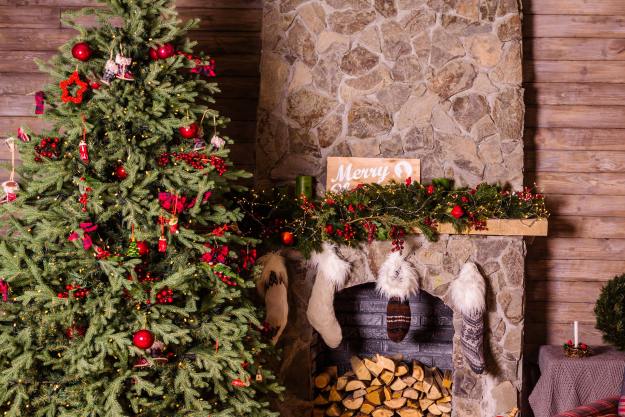When planning a garden, it is easy to be absorbed by the amazing diversity of flowers that bloom in spring or brilliant fall foliage. But the landscape is there year-round, so why shouldn’t it look great in both July and January? To get the most from a garden every month of the year, plan a four-season garden.

Beauty comes from more than just flowers
Garden interest comes from different aspects of the plants. A four-season garden plan should include a combination of plants that exhibit all of the beauty and diversity of the plant kingdom.
Various plants flower at different times of the growing season, feature different growth habits, and produce showy or colorful foliage. Some trees and shrubs have broadleaf evergreen or needle-leaf foliage, while deciduous trees and shrubs make flowers, fruit, or colorful fall foliage. The best gardens combine these and other traits that add to the overall beauty and wonder of the landscape.
Trees and shrubs build the garden foundation
Garden planning has an element of immediate gratification and another element of long-term development. Trees and shrubs are relatively more expensive than herbaceous plants, and they are a long-term investment. As they grow, they change the face of the garden by creating shady microclimates. Plant them with the understanding that their influence over the whole garden changes significantly over time.
Trees benefit the home and garden alike by reducing the amount of energy used to cool the home and providing smaller plants respite from hot afternoon sun. Choose those with spring flowers like flowering dogwoods, colorful fall foliage like maples, or attractive bark patterns like birches, that bring more to the table than just size and structure. Some trees, like the katsura tree and paperbark maple, blend several of these traits for four-season interest. Broadleaf evergreens like hollies and conifers like spruces provide color, structure, and screening during the winter as well as shelter for garden wildlife.
Shrubs provide focal points as they show off their flowers, fruit, or foliage in season. Colorful favorites like lilacs, forsythias, and azaleas produce masses of flowers in spring, then blend into the background the rest of the year. Viburnums offer three seasons of interest, with spring flowers that produce deep blue, black, or red berries in late summer and various shades of fall color. Camellias and daphne bloom in fall, winter, and early spring, while the rest of the garden is dormant.

Mixed perennial borders add a dynamic color display
Perennials are herbaceous plants that grow back year after year. Most perennials send up their leafy growth in the spring and flower during a multi-week bloom phase at some point during the spring, summer, or early fall. Then the tops die back and the roots remain dormant through winter. Some of the best four-season plants feature evergreen foliage or bloom in winter.
Gardeners grow perennials for their diverse foliage colors and textures, and for varied bloom times throughout the year. Evergreen and winter bloomers are especially valuable in breaking up the monotony of the gray, dull months. The most effective gardening strategies for perennials incorporate leaf colors and textures, and bloom times of numerous species, creating an ever-changing display.
Annual flowers create season-long consistency and focus
Annual flowers are herbaceous plants that grow only one season and produce flowers from start to finish. Because of the cost and labor of replanting each season, the use of annuals is best limited to small pockets throughout the landscape. Plant them in containers or strategically located beds near walkways and entrances.
In mild climates, gardeners use warm season annuals like vinca, begonia, and impatiens in summer and cool season annuals such as pansies and snapdragons in winter. As trees, shrubs, and perennials progress through their changes, annuals offer a level of consistency when patterns are repeated through the landscape, and a bright pop of continuous color throughout the growing season.

Seasonal maintenance keeps the garden looking its best
Plan to maintain your four-season garden and ensure that the landscape always looks fresh. Trees and shrubs require occasional pruning to remove individual dead branches or foster an attractive shape. Perennials need to be divided every three to five years to stimulate robust growth and blooming. They can be cut back when the tops die back each year for a tidy appearance. Annuals need to be changed out seasonally. Mulch should be top dressed once or twice a year to protect roots, retain soil moisture, and smother weeds. Other maintenance tasks include fertilizing the garden seasonally and watering or weeding as needed.
Planning a four-season garden requires much more research and organization than planting a flower bed. Building the structure with trees and shrubs that offer different kinds of interest, mixing in perennials that bloom at strategic times throughout the year, and adding annuals for bright color and consistency all combine to mean lots of time reading, researching online, and browsing in nurseries. It typically turns into a multi-year endeavor and may not have a “finished” point. But, this sort of gardening rewards those who enjoy spending time in their yard year-round with a beautiful landscape that always offers something new.
Looking for something else? Learn how to plot a seasonal garden with our quick and easy guide.
Editors' Recommendations
- Everything you need to know about choosing the best rocks for landscaping
- Focus on color: Bring some sunshine to your garden with these orange plants
- Do you live in climate zone 2? Here’s what you need to know
- Could electrogardening be the way of the future?
- Climate zone 3 plants that will thrive in cool temperatures




